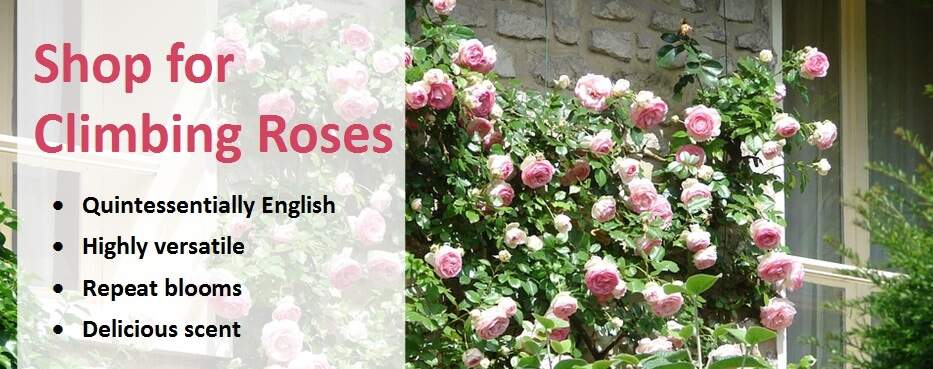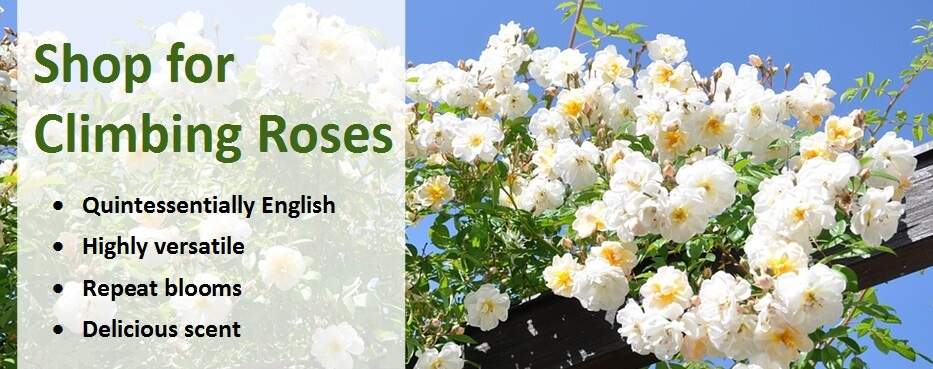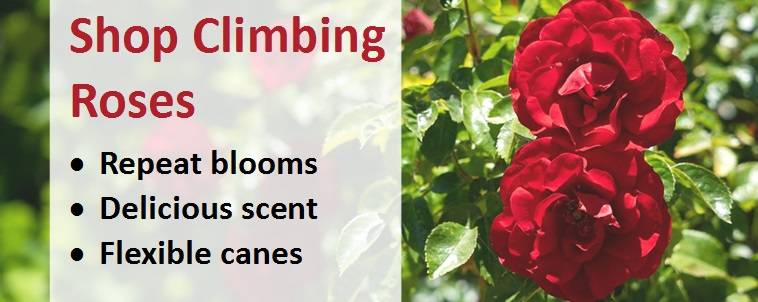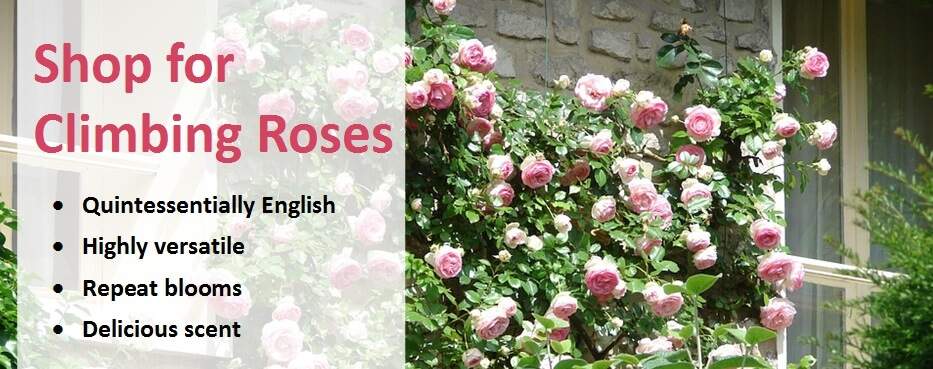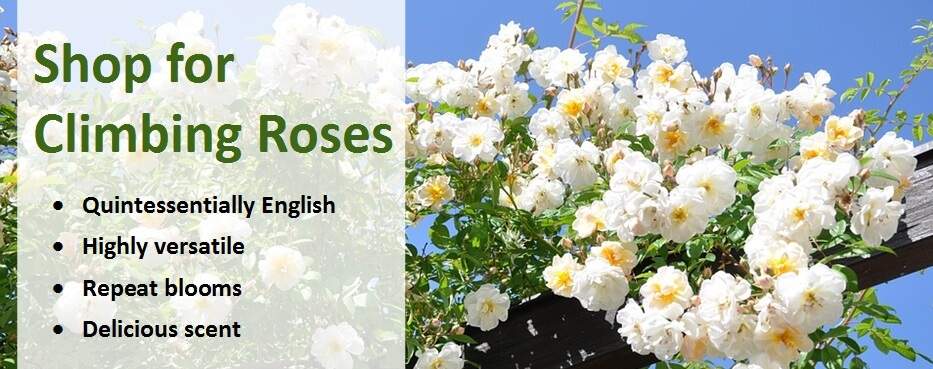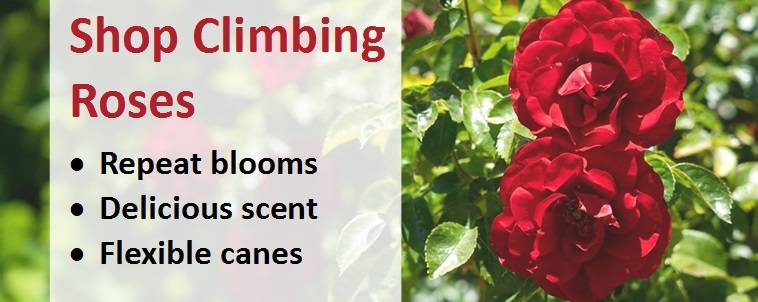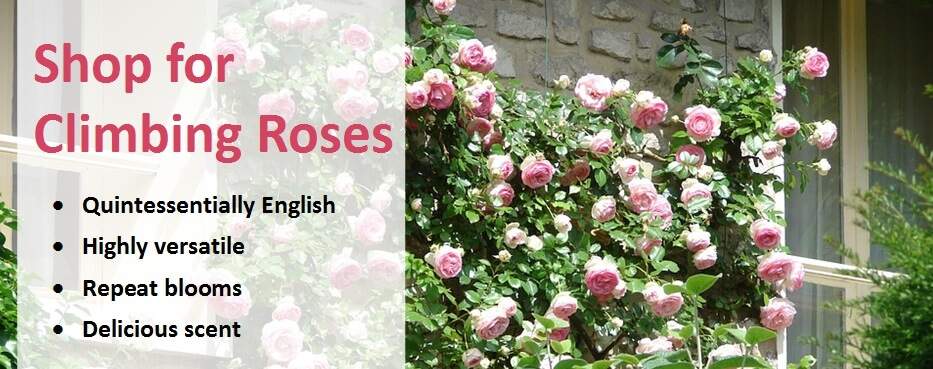Check Here Before Buying – Pot Size Matters...Not all websites offer the same. Plants in a 2-litre pot have twice the root system of a P9 or 1 litre pot.
How to plant a climbing rose
Climbing roses are quintessentially English and highly versatile - strong growing varieties are ideal for covering decorative obelisks, arches, walls, trellises and fences whilst shorter varieties can be trained around poles and tripods to form 'pillars'. Their flexible canes make them easy to fan out and as their growth is not too vigorous, they will not overwhelm their support structure. They will provide superb repeat blooms and a delicious scent, making them great for adding height, colour and perfume to your garden. There are also larger, more vigorous rambling roses, which are best in bigger gardens to cover unsightly buildings or large objects to provide a magnificent summer display.
When and Where to Plant
When to Plant
- Potted climbing roses can be planted at any time of the year providing the ground is not frozen or lying wet. Between the beginning of autumn and early spring when they're dormant can be best, allowing the roots to establish before your rose bursts into life in the spring.
- If the conditions are not suitable, keep potted roses in an unheated outbuilding and 'heel in' bare root roses by digging a trench in ordinary garden soil and placing the roots inside and covering with soil. Provide additional fleece protection if conditions are particularly harsh.
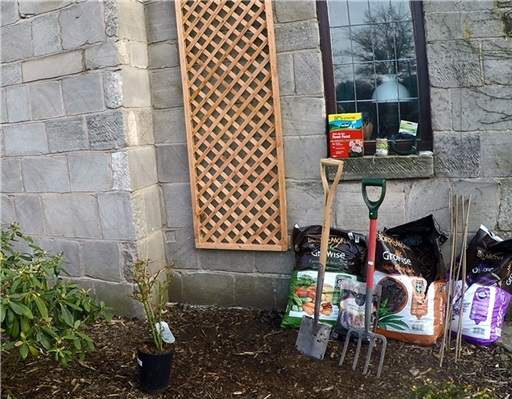
Where to Plant
- Choose a spacious, sunny position that's sheltered from strong winds.
- A well-drained soil is preferred as they do not typically cope well with wet ground.
- If your garden naturally lies wet, you'll want to incorporate some sand or coarse grid and organic matter when planting to improve drainage.
- If you're planting your climber up a support structure on a wall, position the roots at least 30cm (1 foot) away from the base of the wall so rainfall can get to the roots. Lean the stem towards the wall at an angle of about 45 degrees as the starting point for training.
- If you're growing your climbing rose up a trellis away from a wall, you should plant it as close as possible, almost underneath the trellis to allow the main stems to grow up very close to the trellis making it easy to tie them in rather than being further away and having to be trained back.
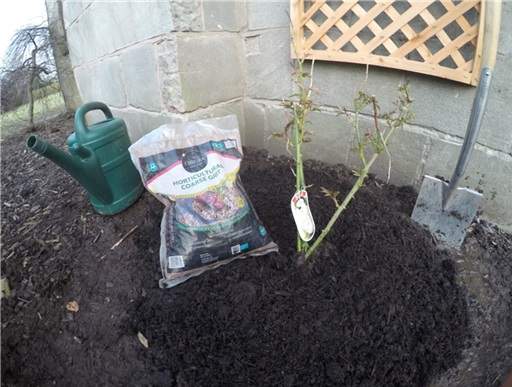
Spacing
- Climbing roses will not reach their potential in shade or if they're crowded out by other plants.
- If you're growing several roses together, plant them 120cm (4 feet) to 180cm (6 feet) apart, depending on how much you want the foliage and flowers to fill out the support structure.
- Plant 120cm apart if you want your climbing roses to ultimately form a screen, for example to hide an unsightly shed or storage area. Plant 180cm apart if you want to still be able to see through your support structure in places and have an open and airy effect.
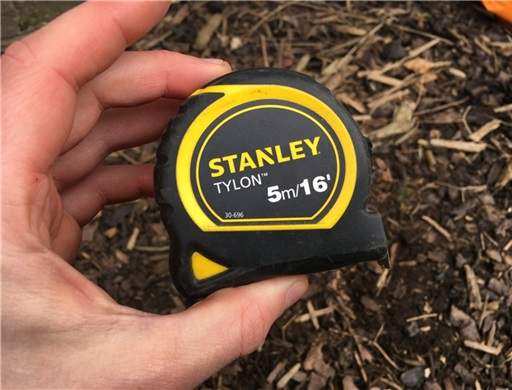
Climbing supports
- All climbing roses are non-clinging and need to be tied into a support to help them grow.
- Some gardeners choose to grow climbing roses through shrubs or trees. We recommend against this because over time the support plant will be choked by the rose. Natural supports rarely provide enough support for large heavy blooms, meaning they tend to hang down and break off.
- A simple system of horizontal wires on a wall or fence makes a good support structure for climbing roses (those growing to a height of 2 metres to 4 metres). Other good options for climbing roses are an obelisk, column, free-standing trellis or pyramid.
- For growing against wires, install a series of horizontal rows of malleable metal wires to act as your support. Install vine eyes into the wall at either end of your growing area and thread wire between them with the first at 45cm above the ground, then others every 30cm.
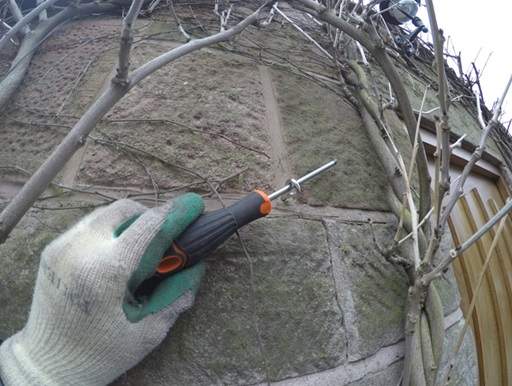
- Rambling roses growing to more than 4 metres tall - and best suited to larger gardens - require a more substantial structure. Arbours, pavilions, pergolas, arcades and high fences work well.
- Whatever support you choose, your roses will also flower better if it's trained as bending and twisting the stems slows down the flow of sap and promotes more flowering shoots.
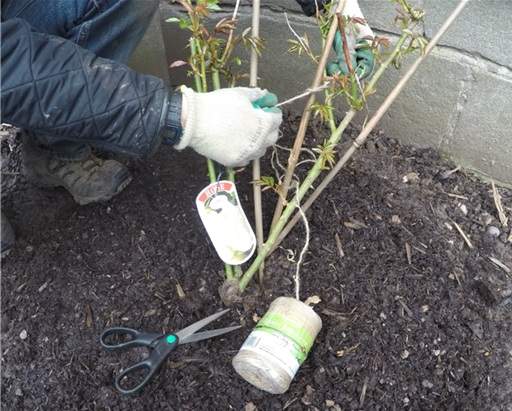
Equipment Required
- Climbing rose
- Spade
- Fork
- Trellis or other support structure
- String or cable ties
- Scissors
- Manure/soil improver
- Sand or coarse grit to improve drainage (or heavy soils)
- Rose feed
- Canes
- Wheelbarrow (optional)
Planting Instructions
Double-Digging the Soil
- As climbing roses have long 'tap' root systems that penetrate deep into the ground, we recommend "double digging" the soil in preparation for planting to give them the best start.
- Double-digging means breaking up the soil to a depth of 2 spade lengths.
- Starting at one end of your planting area, dig a trench one spade's width wide and one spade's length deep, putting the dug soil into a wheelbarrow.
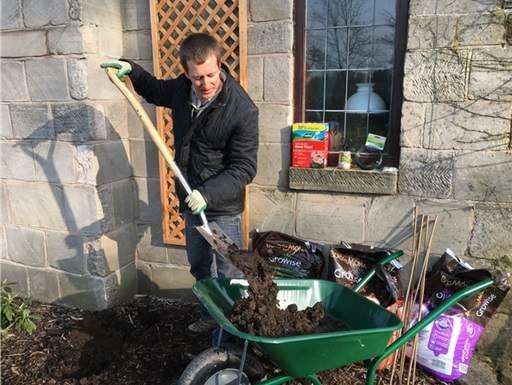
- One complete, turn and break up the soil below the bottom of the trench (i.e. 2 spades deep into the ground). You may alternatively wish to use a fork to break up the lower ground.
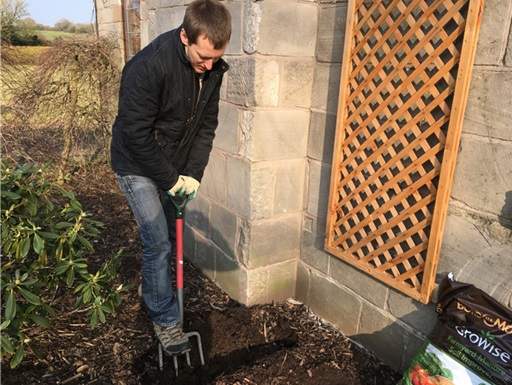
- Once complete, move onto the next spade-width strip of ground and turn the top spade's length of soil into the first trench. Again, use your spade or fork to turn & break up the subsurface soil.
- Repeat the process until you reach the end of the final strip of the planting ground and fill the final strip using the soil from your wheelbarrow.
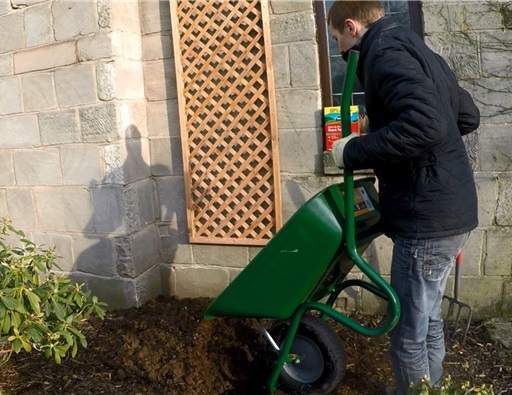
Installing your Support Structure
- In this case we're going to grow our climbing rose up a trellis on the wall.
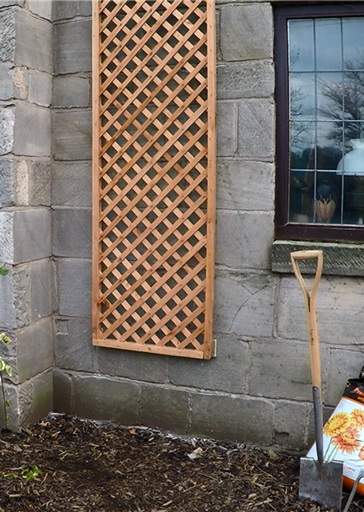
Digging the Planting Hole
- Dig your planting hole wide enough to comfortably accommodate the roots and deep enough so the graft will rest at soil level (to spot the graft look for a bulge at the base of the shoots).
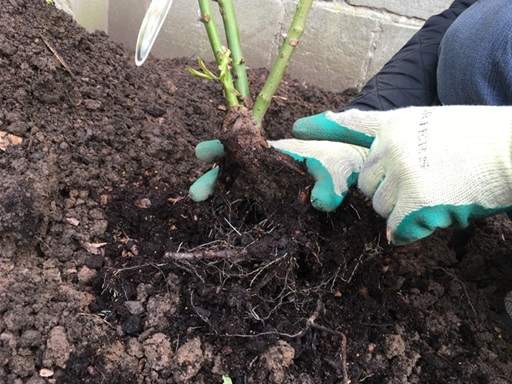
Tease out the roots from the rootball
- Tease out the roots from the base and around the edges of your root ball.
- This is important to encourage the roots to move out from the circular shape they adopted in the pot once they're in the ground.
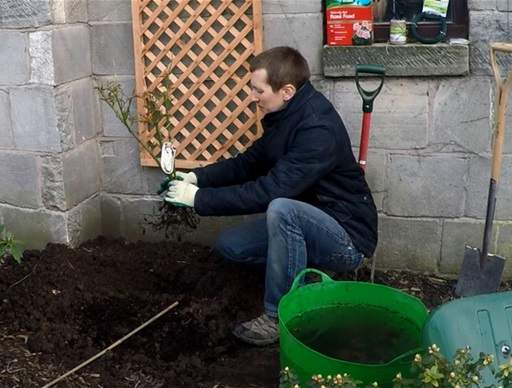
- Climbing roses can sometimes be planted too deeply in their pots. It's essential the graft point (bulge at the base of the shoots) is at the finished level of the ground when planting is complete.
- It can be useful to find the graft point at the time you tease out the roots from the rootball. If the compost line is higher than the graft point, remove the excess soil above it. This will prevent you from planting too deep, which would make your rose vulnerable to rotting and disease.
Soak the rootball in a bucket of water
- Dunk the rootball in a bucket of water for 20 minutes before planting, allowing the water to seep into the centre.
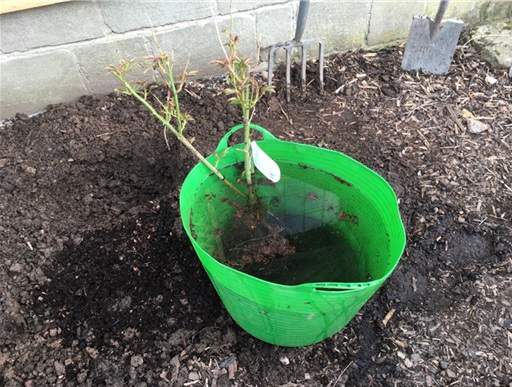
Position root ball in the planting hole
- Place the root ball in the planting hole so the top of the roots is at ground level.
- Use a plank of wood or bamboo cane to gauge the planting depth before backfilling.
- Remove more soil or add back some dug soil to the base of your planting hole to achieve the correct planting depth, constantly gauging the depth with the plank of wood or bamboo cane.
- Once you've got the correct depth, spread the roots across the planting hole.
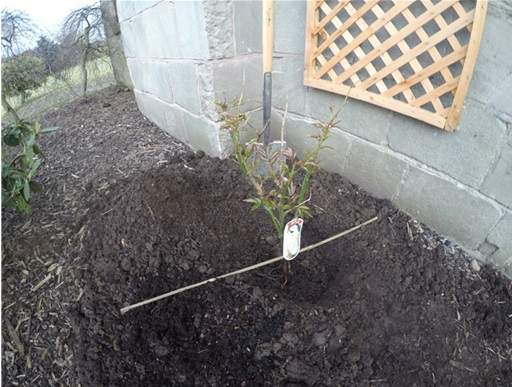
Backfilling
- Backfill using a mix of the dug soil plus plenty of well-rotted organic matter such as garden compost, recycled green waste or manure.
- We also recommend mixing in a rose feed as roses are heavy feeders.
- Shaking the rose as you backfill will help the soil settle around the roots.
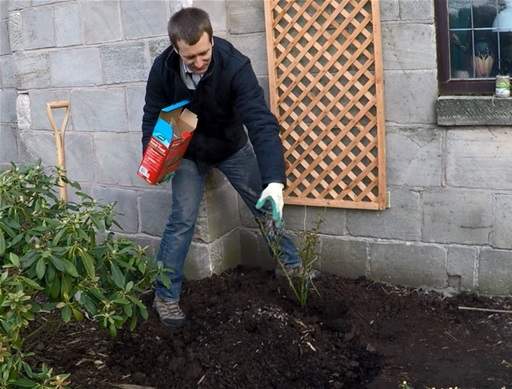
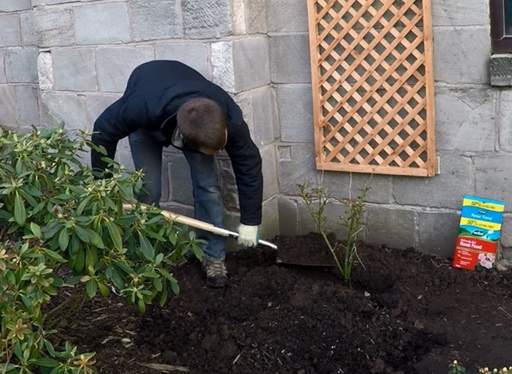
Firming down
- Firm down the soil with your toe pointing towards your rose so you're not pushing it down but still firming the soil around it. Then cover the ground where you've firmed your rose in.
- Once you've finished backfilling and firming down, check the all important graft point is still just visible and you haven't planted too deep.
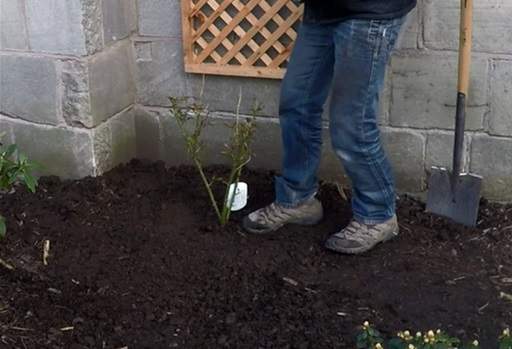
Removing ties, labels etc
- Before training your climbing rose to its support, you'll want to remove any ties, labels or anything else that might have been tied around your rose on the nursery - you don't want anything to impede its growth.
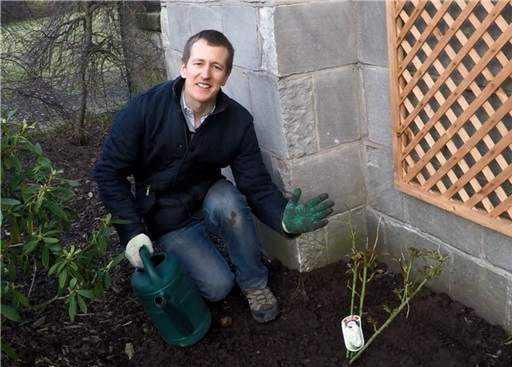
Best Climbing Roses
- Rose Abraham Darby - showy, repeat-flowering English rose studded with large, fully double, deeply cupped, soft peach-pink blooms from July to October.
- Rose Aloha - sweetly-scented, fully double rose-pink to salmon pink blooms above dark green leaves.
- Rose Charlotte - large, glossy leaves and pale yellow roses, with pink tinged edges.
- Rose Compassion - beautiful, fully double, high-centred soft apricot to salmon pink blooms with an outstanding, sweet scent emerge from well-shaped buds between June and August.
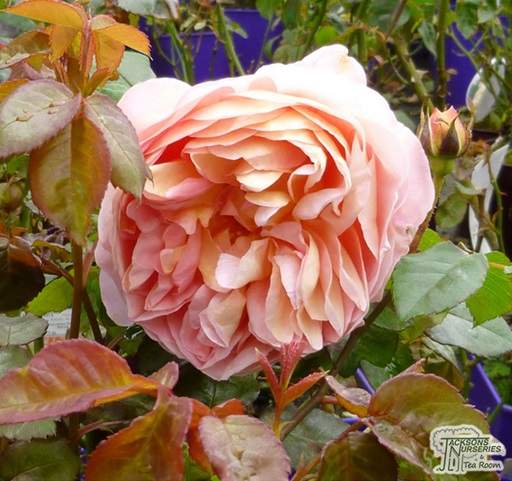
- Rose Etoile De Hollande - large, fully double, hanging, deep crimson blooms with a seductive, heady Damask fragrance that appear repeatedly throughout the summer.
- Rose Falstaff - powerful old fragrant rose which is one of the best purple/crimson varieties by Dave Austin
- Rose Gertrude Jekyll - large, fully double, cup shaped, glowing deep pink blooms emerging from fat, eye-catching buds, releasing an outstanding, old-fashioned damask fragrance as they open.
- Rose Golden Celebration - stunning, golden-yellow, fully double, cupped blooms with apricot centres.
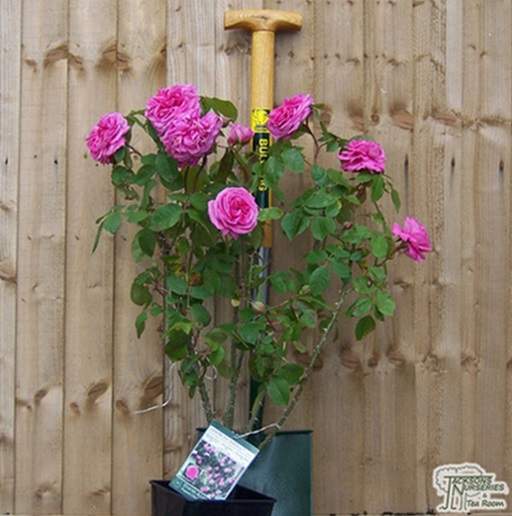
- Rose Golden Showers - stunning, large, double golden blooms in loose clusters from July to first frost.
- Rose Graham Thomas - handsome, old-fashioned, cupped, paeony-like blooms with a unique, deep golden-apricot colour emerge from attractive, apricot-pink buds from early summer to late autumn.
- Rose Gruss An Aachen - beautiful rose with large, fully double cup-shaped, pearly pink blooms, releasing a light fragrance as they open.
- Rose Heritage - deciduous English rose from the David Austin collection, bearing medium-pink, double to full blooms, with a strong and fruity fragrance.
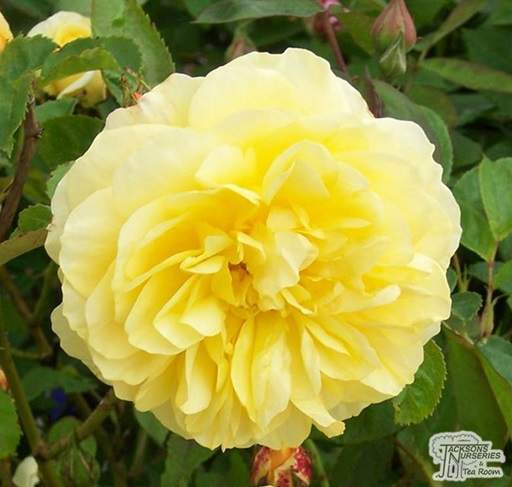
- Rose Iceberg - sweetly-scented sprays of flat, fully double, glowing white flowers emerge from shapely, pink-tinged buds between July and October. Climbing form of the most popular white floribunda.
- Rose Braithwaite - English rose from the David Austin collection, with strong, old rose fragrance (which develops with age), and crimson red, very double bloom form, which flowers in summer and autumn.
- Rose Mary Rose - one of the most reliable robust and fragrant ‘Old English’ roses. Honey and almond scented pink rose, medium sized blooms, are borne on a well shaped medium sized twiggy frame.
- Rose New Dawn - produces an abundance of semi-double, shell-pink, cupped blooms which are borne in large trusses repeatedly from June to July above shiny, mid-green deciduous leaves.
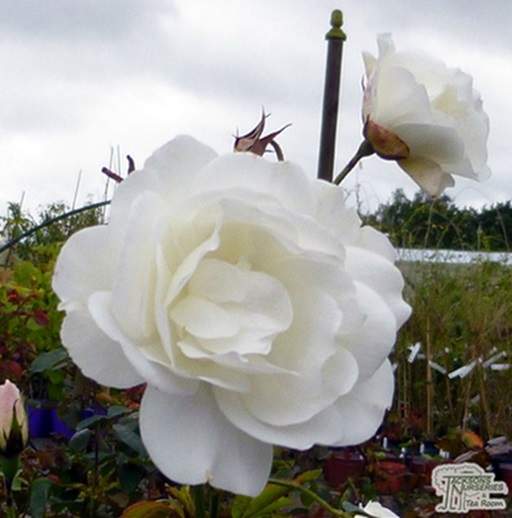
- Rose Paul's Scarlet - sweetly scented, cup-shaped, fully double scarlet blooms which appear in abundance on stiff, thorny stems from June to July.
- Rose The Generous Gardener - fully double, soft pink blooms with a strong and delightful fragrance. Bred by David Austin with excellent disease resistance.
- Rose The Pilgrim - gorgeous, large soft buttery yellow rosette shaped blooms with a beautiful fragrance.
- Rose William Shakespeare - stunning crimson red blooms, which deepen to a dark purple as they mature, opening as a deeply cupped rose, and then shallowing to a wider bloom.
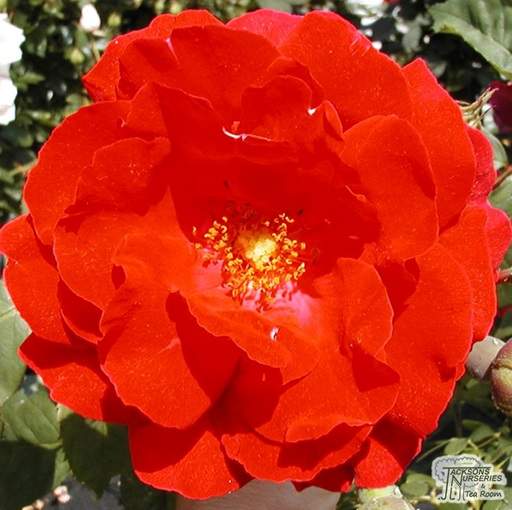
- Rose Winchester Cathedral - an abundance of fully double, cupped, pure white blooms emerge from attractive, pink-tinged buds across the entire shrub from July to September.
- Rose Young Lycidas - attractive rose that offers a pop of colour in the form of large, purplish-pink flowers which carry a strong fragrance.
- Rose Zephirine Drouhin - produces lavish, loosely cup-shaped, semi-double deep carmine-pink flowers with a lovely sweet fragrance across the whole plant from June until first frost.
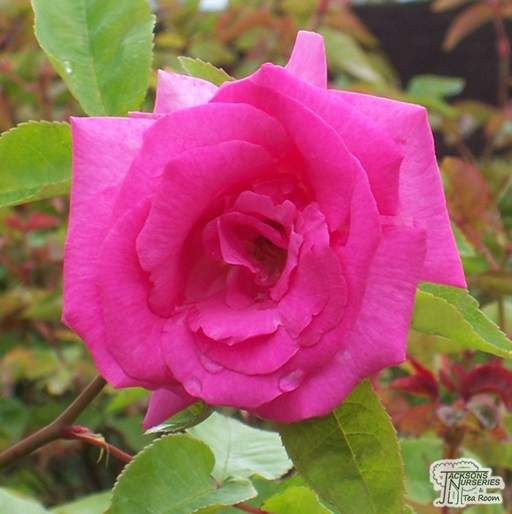
Best Rambling and Groundcover Roses
- Rose Albertine - popular, vigorous rambler producing a lavish display of large, loosely double, soft coppery-pink blooms from mid- to late summer.
- Rose Suffolk - low growing, deciduous groundcover rose producing single, beautiful scarlet-red blooms throughout summer and autumn, followed by burnt orange hips.
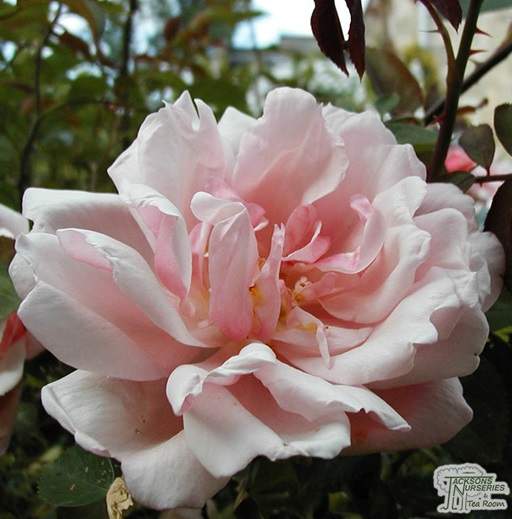
Comments
Share this page:


